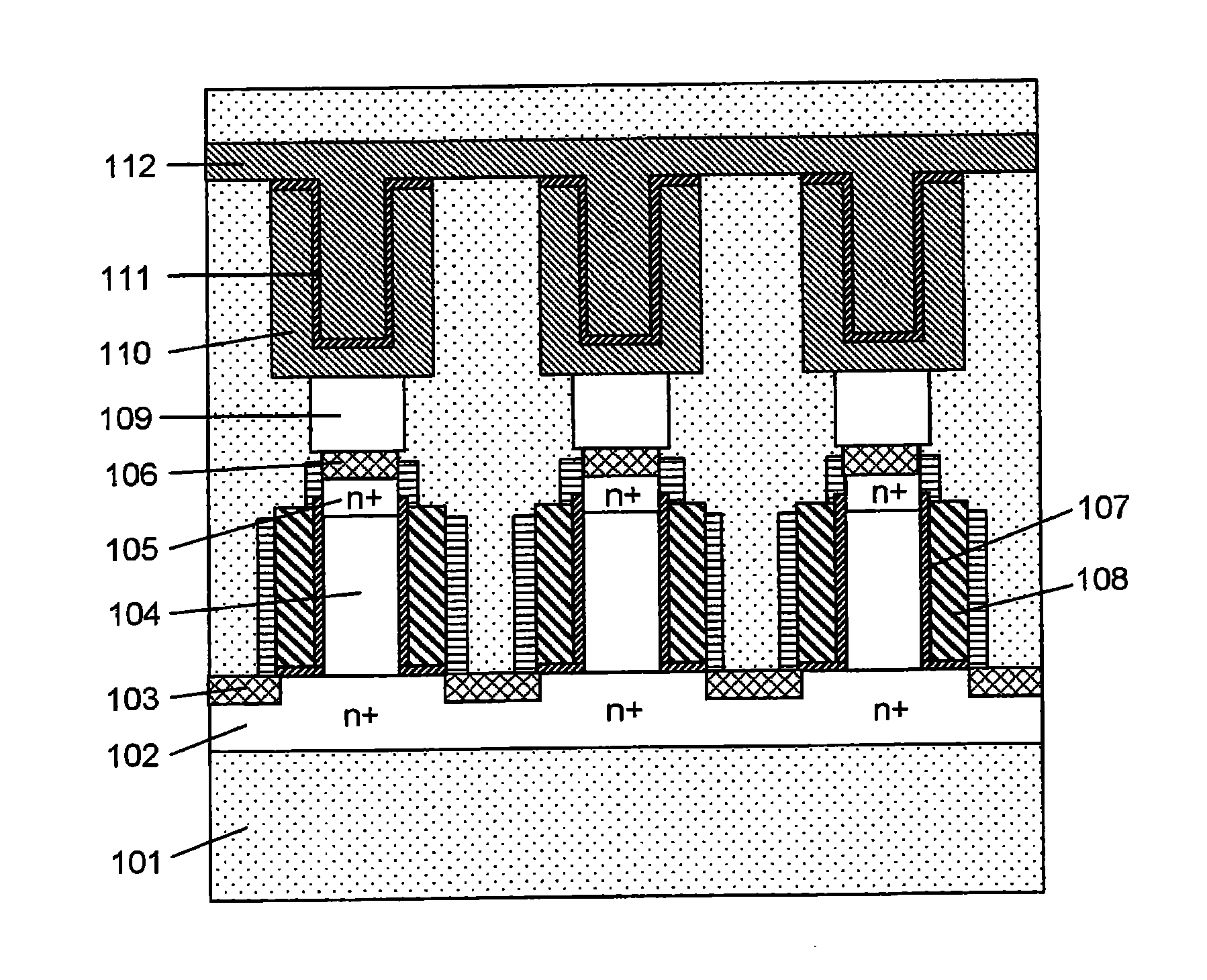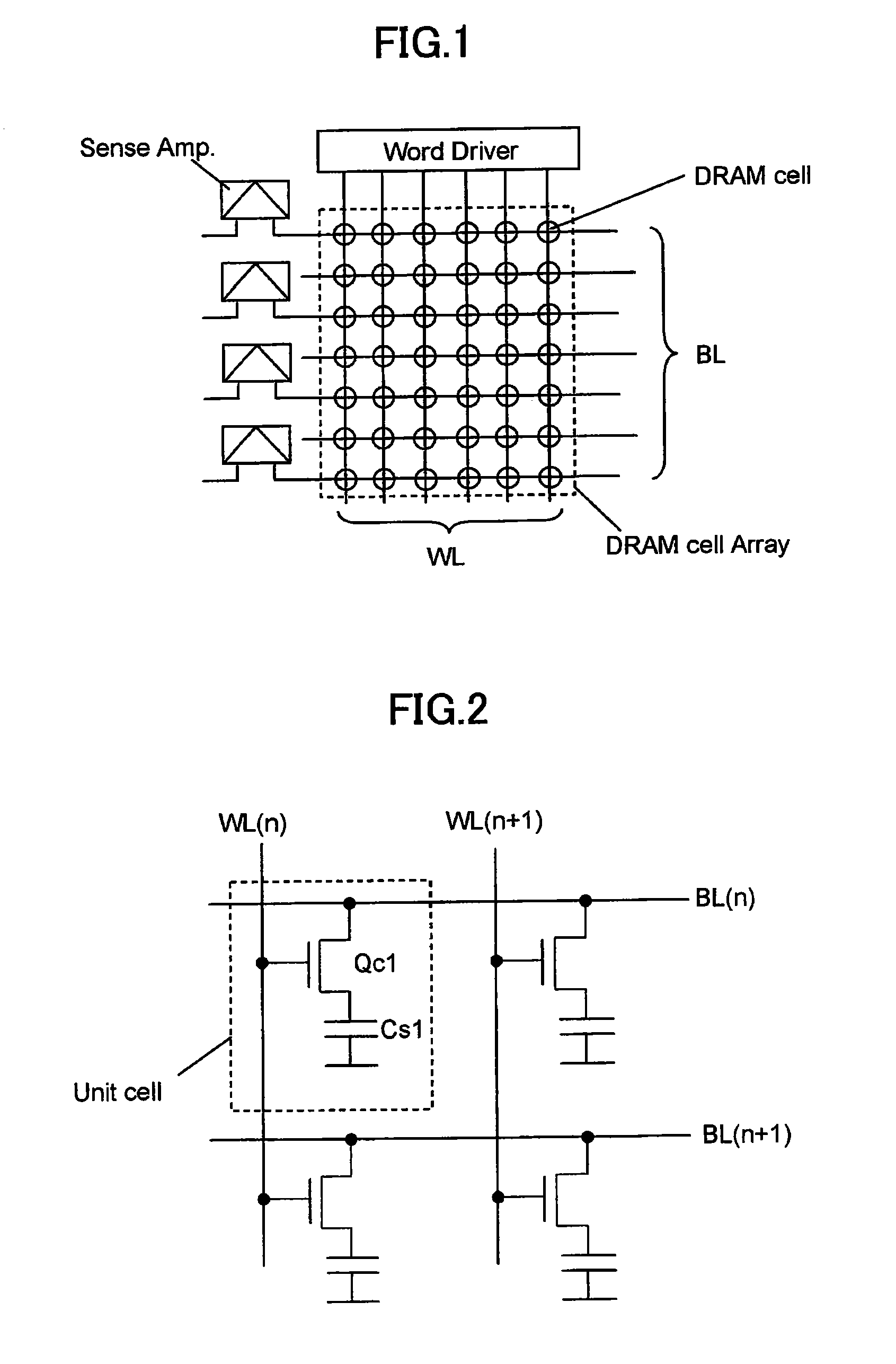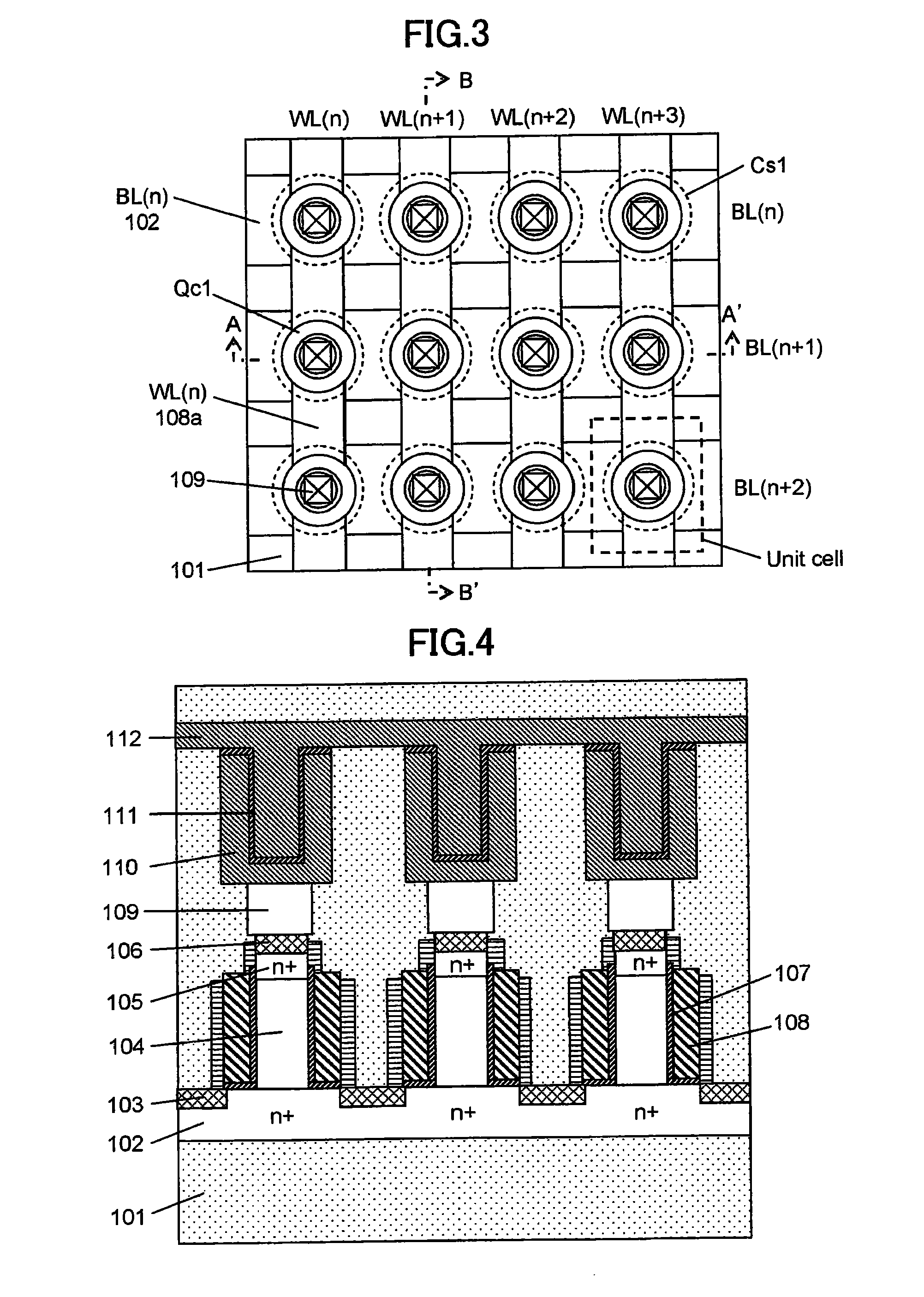Semiconductor storage device and methods of producing it
a technology of semiconductor storage and semiconductor layers, applied in semiconductor devices, electrical equipment, transistors, etc., can solve the problems of low thermal resistance of silicon layer, significant deterioration of transistor performance, and low transistor structure, and achieve the effect of reducing the occupied area
- Summary
- Abstract
- Description
- Claims
- Application Information
AI Technical Summary
Benefits of technology
Problems solved by technology
Method used
Image
Examples
first embodiment
[0068]FIG. 1 illustrates a configuration of a cell array of a DRAM according to a first embodiment of the present invention. A plurality of DRAM cells are formed at respective ones of all a plurality of intersecting points of a plurality of bit lines with a plurality of word lines, to make up a cross-point type cell array. FIG. 2 illustrates an equivalent circuit of the DRAM cell formed at each of the intersecting points of the bit lines with the word lines. The DRAM cell comprises one capacitor element Cs1 operable to accumulate electric charges, and a selection transistor Qc1 operable to transfer electric charges. As a result of accumulating electric charges in the capacitor element Cs1, data is stored therein. Then, when a word line WL(n) associated with a gate electrode of the selection transistor Qc1 is turned on, the data stored in the capacitor element Cs1 is read out onto a bit line BL(n). The read-out signal is amplified by a sense amplifier connected to the bit line.
[0069]...
second embodiment
[0101]FIG. 24 is a sectional view showing a configuration of a CMOS inverter section according to a second embodiment of the present invention. Except a configuration of a CMOS circuit section, such as a CMOS inverter, in sectional view, the remaining configuration in the second embodiment is the same as that in the first embodiment.
[0102]In the first embodiment, the contact of the CMOS inverter section is formed in a two-layer structure. However, as a cell size of a DRAM becomes smaller, a height dimension of a capacitor element Cs1 has to be increased to adequately ensure an amount of electric charges to be accumulated, so that the second-layer contact 210 is increased in depth, which is likely to cause difficulty in forming the second-layer contact from a processed top surface. In this case, as shown in FIG. 24, the second-later contact 210 may be dividedly formed using a second-layer sub-contact 310a and a third-layer sub-contact 310b to facilitate formation of a contact. This c...
third embodiment
[0103]A third embodiment of the present invention provides a structure and a production method for a DRAM cell array section without silicidation. In the first embodiment, silicidation is also performed in the DRAM cell array section. However, the silicidation of the diffusion layer of the selection transistor in the DRAM cell is essentially required to increase an impurity concentration in the source / drain region, which causes deterioration in hold characteristics. The third embodiment can provide a DRAM having adequate hold characteristics, although the number of production processes is increased.
[0104]Except that no silicide layer is formed in a top surface of each of lower and upper diffusion layers, a configuration of the DRAM cell array section in top plan view is the same as that in FIG. 3.
[0105]With reference to FIGS. 25 and 26, the configuration of the DRAM cell array section will be described below. FIG. 25 is a sectional view taken along a cutting-plane line corresponding...
PUM
 Login to View More
Login to View More Abstract
Description
Claims
Application Information
 Login to View More
Login to View More - R&D Engineer
- R&D Manager
- IP Professional
- Industry Leading Data Capabilities
- Powerful AI technology
- Patent DNA Extraction
Browse by: Latest US Patents, China's latest patents, Technical Efficacy Thesaurus, Application Domain, Technology Topic, Popular Technical Reports.
© 2024 PatSnap. All rights reserved.Legal|Privacy policy|Modern Slavery Act Transparency Statement|Sitemap|About US| Contact US: help@patsnap.com










